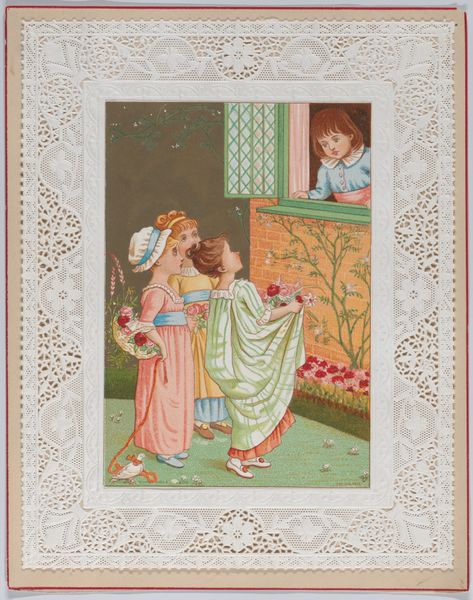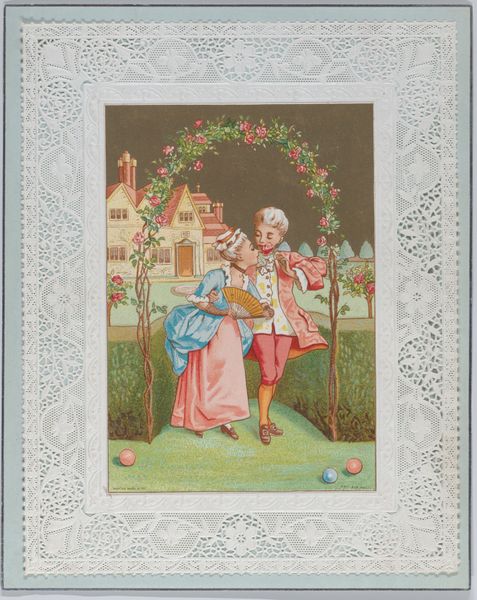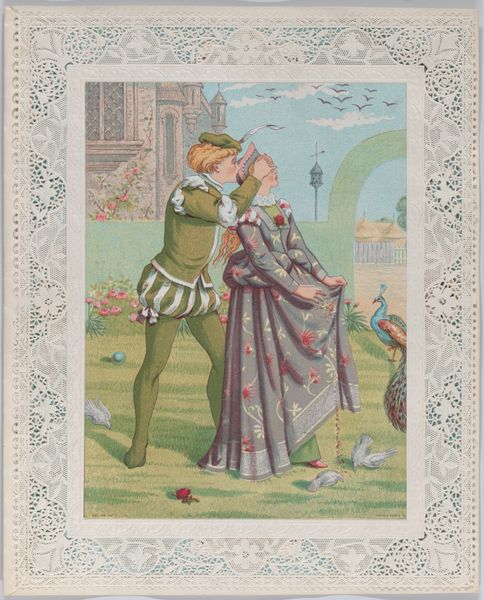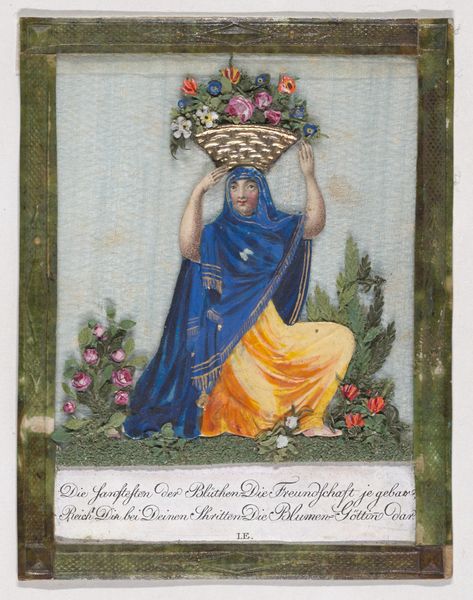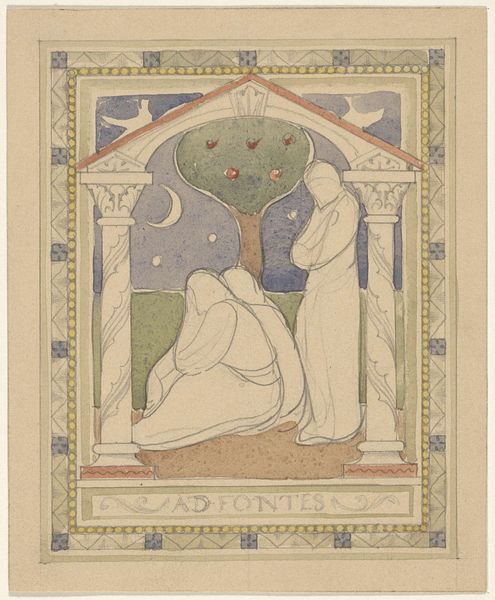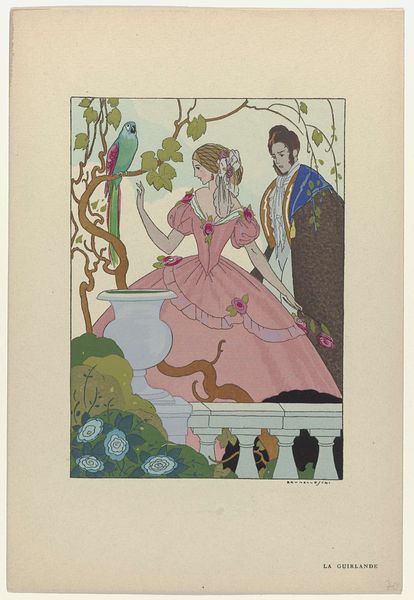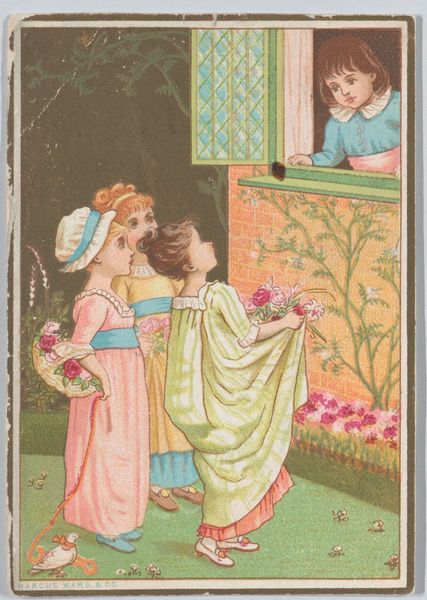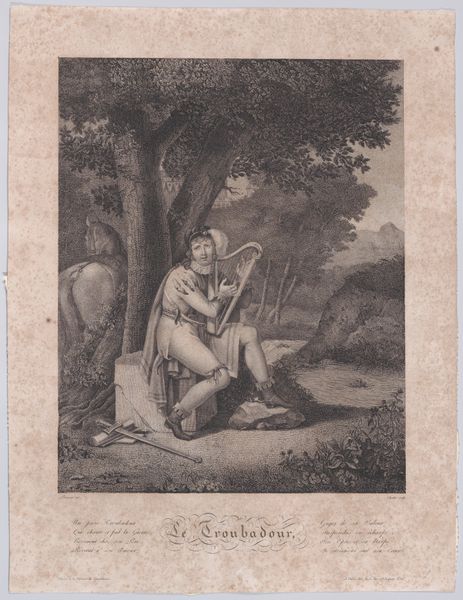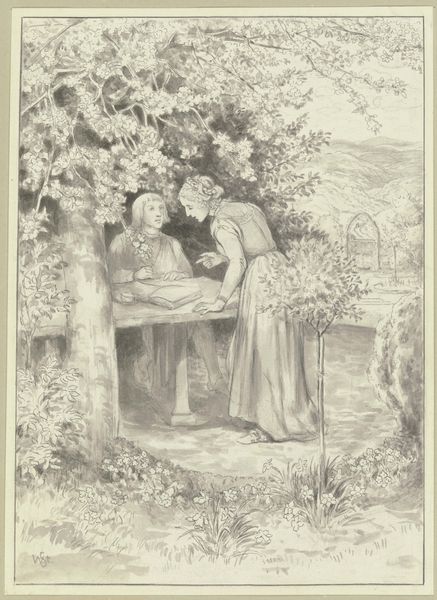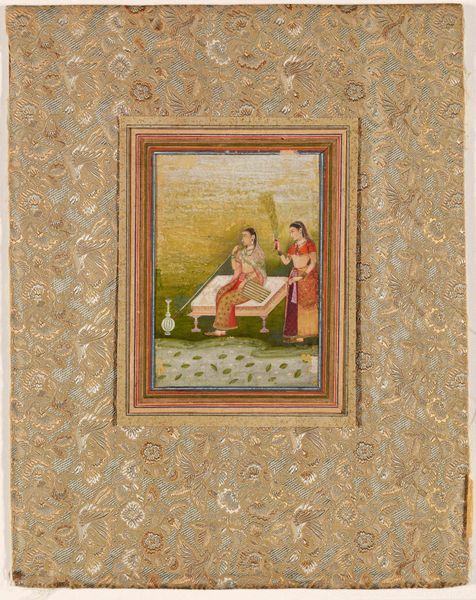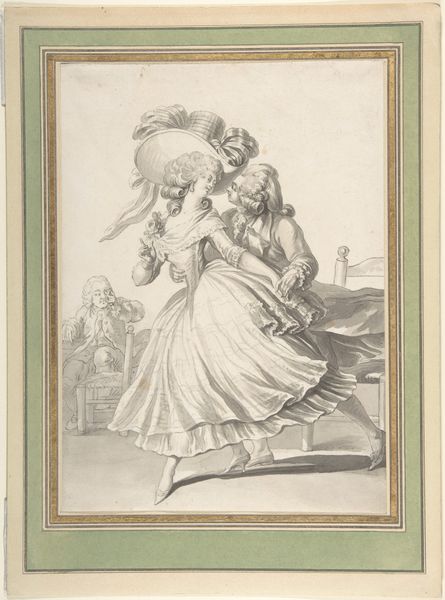
Dimensions: Width: 4 15/16 in. (12.5 cm) Length: 6 11/16 in. (17 cm) Total size: 18.2 cm x 23 cm.
Copyright: Public Domain
Curator: The artwork before us is Kate Greenaway's "Valentine," created in 1876. It's currently housed at the Metropolitan Museum of Art. Editor: It exudes a tender, almost secretive atmosphere, don’t you think? The soft watercolors and lace border lend it an ethereal quality. The colour harmonies feel precise and pleasing to the eye. Curator: Greenaway was part of a generation that sought to reshape Victorian childhood. Valentine's Day cards, and depictions of childhood, were being re-envisioned as opportunities to convey emotion and innocence in ways that reflected changing social values, and attitudes to female relationships. Editor: The way Greenaway uses line is striking. It outlines forms simply and with an emphasis on shape, more than detail. And the texture achieved with watercolour provides depth despite a lack of dramatic shading or chiaroscuro. I think that lends it that innocent look you're mentioning. Curator: Indeed. These illustrations functioned within a larger context where images of childhood innocence were deployed to negotiate anxieties about gender roles. Were women gaining too much independence? The figures of the girls feel especially symbolic here. One holds the flower while the other whispers—suggesting not just friendship, but intimacy. The women occupy an intimate relationship that may subtly hint at lesbian affection within permissible social boundaries. Editor: I am less sure of that particular symbolic reach, though of course I value the historical perspectives you've just mentioned. I am struck more by how she balances detail and simplicity to render that scene in such delicate form. There are tonal consistencies across the subjects depicted here and with very slight recession, giving the piece this lovely flatness. Curator: These scenes, however innocuous, were doing complex cultural work, making claims about female agency and desire in nuanced, and at times, radical ways. It represents both a historical artefact, and also points to the idea that love, in all of its diverse forms, deserves visibility and recognition. Editor: For me, the genius here lies in how she harmonizes form and feeling through her artful manipulations of colour, shape and texture to leave you with a palpable emotional mood. I think you will agree that we will keep unearthing gems like these which prompt rich interdisciplinary analysis that makes our role fulfilling. Curator: Agreed.
Comments
No comments
Be the first to comment and join the conversation on the ultimate creative platform.
